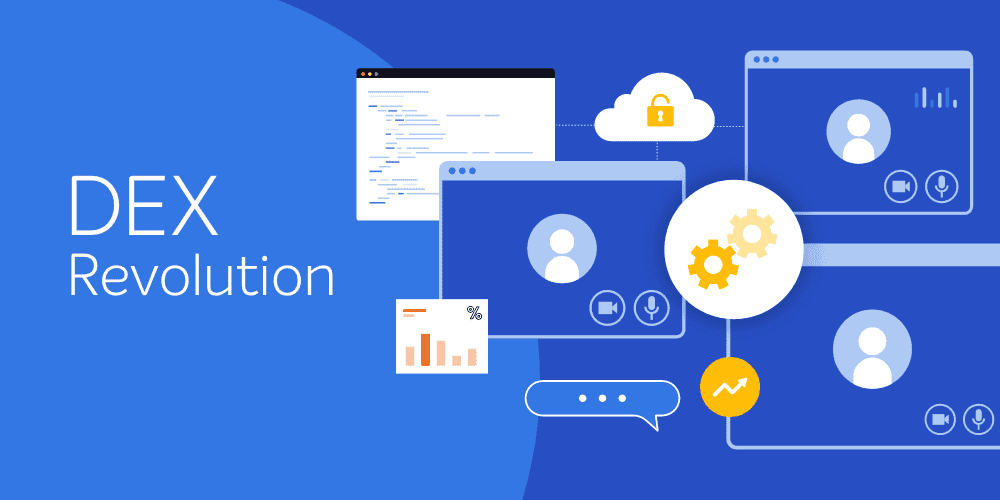In part one, we looked at how organizations are consolidating DEX initiatives into Centers of Excellence (CoE). We also uncovered the foundations of an effective CoE and gave a short introduction about how to measure success for continued leadership buy-in. In this second part let’s dive deeper into optimum models, roles and responsibilities, hybrid CoEs and finding the right balance with IT and HR processes.
Building a DEX Center of Excellence the right way
In a Forrester study of IT organizations, only 34% of respondents said they feel equipped to support increasing remote and hybrid work needs. That means that, although most understand what the changing workplace requires to succeed, few organizations have the right structures in place to provide the necessary support. Furthermore, our 2022 research report into the state of DEX highlights that 78% of respondents believe their organization still struggles to support IT's role in hybrid working.
To allow your DEX strategy to thrive to truly meet the changing world of work, it’s time to give it the deliberate attention it deserves by forming a cross-department CoE. The path to success is rarely straightforward, and building an effective DEX CoE is no exception. Here are a few key points to consider when structuring your DEX CoE to ensure you get it right from the ground up:
- Bring in expertise from across the enterprise. Yes, DEX is rooted in IT as an extension of endpoint management but an increasing focus on experience and sentiment opens the door for other areas relating to organizational processes and employee experience to make valuable contributions. That could mean extending invitations to wide-ranging business teams as well as HR, CX, operations, IT security, and change management or innovation roles.
- Define KPIs and metrics of success early on – and make them applicable to much more than usual IT measurements. Gather input from leaders across business teams to understand how improvements to DEX will impact them. Unsure who to approach? Ask yourself who would benefit from happier employees and increased business performance? Hint: nearly everyone!
- Don’t be afraid to iterate quickly and seize opportunities. The CoE exists to take risks in the name of progressing what best practice in DEX looks like for your organization. The best CoEs work in a DevOps style to quickly pilot fresh ideas and iterate improvements. Adopting lean, Agile practices can have benefits beyond the walls of your DEX CoE. By fostering productive working, a survey found that employees working in an organization that championed DevOps working were more than twice as likely to recommend their company to peers.
- Measure everything you can. The route to improvement is through data. By setting baselines early on, you can measure the impact on specific job roles, geographies, whether employees are working remotely or on-site and other factors. The more information you have, the better you can demonstrate CoE ROI and continue to secure leadership buy-in.
- Don’t lose sight of the human at the center. Some 64% of IT organizations don’t routinely ask end users about their IT experience. Even during a major deployment, less than half (42%) ask how satisfied end users are with the change. To adapt well to change and embrace new ways of working, employees need plenty of time, training and a good level of two-way communication.
Baking the right KPIs, roles and processes into your DEX CoE from the start will enhance its output. Technology underpins nearly every aspect of modern business so having a capable taskforce bringing in views from across the enterprise is vital to the success of the employee experience in the age of hybrid working.
Before you start building your CoE, test the current maturity of your DEX model by taking this Forrester assessment.
Roles and responsibilities in a DEX CoE
According to John DuBois, Vice President, Digital Services at NTT DATA speaking at the 2021 WFA conference, you need three groups of people in a DEX CoE:
- Experts in technology
- Experts in process
- Experts in organizational change management (OCM)
They make up the three equally important “legs of the stool” holding up DEX within an enterprise. DuBois elaborates on this, explaining “they are critical in driving continuous innovation and transformation, as well as driving real-time proactive issue resolution.” Bringing these three types of experts around the same table, can boost an organization’s employee productivity and push them to look beyond tactical issue remediation.
By unlocking the power of organizational data to steer improvements beyond solving IT’s issues with a changing workforce, a DEX CoE is driven by – and benefits – nearly every corner of an organization. It’s also important to bring in people with expertise beyond IT’s remit to enhance OCM: the training and two-way communication with employees that will ensure the success of DEX improvements.
What is a hybrid CoE?
When we talk about digital transformation writ large, we’re often talking about a hybrid approach that puts some of an organization’s infrastructure in the cloud. As ways of working change, organizations are having to adapt to a workforce suddenly spread between the office and remote locations, accelerating the move to hybrid infrastructure. For a ‘hybrid’ DEX CoE to fit these new ways of working, many of the principles remain the same:
- A focus on data management that combines data types to give a nuanced view of, in this case, employee and business activity
- Striking a balance between initiatives hosted on-premises and in the cloud, taking in IT security’s view on disaster recovery, continuous testing and analytics
- Agile methodologies, meaning improvements to DEX can be implemented iteratively and at speed in a DevOps-driven approach
- A mix of automated and manual testing, led by IT, to ensure DEX technology improvements are secure and will meet the desired objectives
It’s important to remember that the desired endgame for a DEX CoE has everything to do with users – your employees. The right combination of traditional methodologies and agile for speed and iterative progress needs to be a collaborative decision between the wide-ranging members of your CoE.
How DEX intersects with HR centers of expertise
HR, as an overall champion of the employee experience, is pivotal in shaping DEX strategies and should be a lynchpin of any CoE, alongside IT. With unique insight into employee’s views and experiences, HR can be instrumental in identifying where and how digital tools can make a difference to business outcomes.
Your HR department will have a vested interest in supporting employee engagement as a means of reducing churn and boosting retention rates. They may also be looking for ways to differentiate the employee experience from competitors in recruitment, using DEX initiatives to level-up your reputation as an employer of choice. After all, as this article from HR Executive.com explains, employee experience has been a significant factor in retaining workers amid the Great Resignation, for example.
They will also have a much-needed focus on accessibility and equality, meaning they may object to digital tools that only suit on-site employees or that alienate staff with working processes outside of the norm.
Most enterprises have some form of HR Center of Excellence or expertise in place, championing employee wellbeing in the workplace and creating best practice processes with people at the center. By tapping into these pools of expertise, a DEX CoE can truly thrive by uniting IT, HR and other departments around common goals of improved productivity, higher profitability, and leveraging the proven relationship between employee and customer experience.
You can learn more about creating a DEX CoE by watching the 2021 WFA panel session here, or alternatively check out Part one of this blog series.







